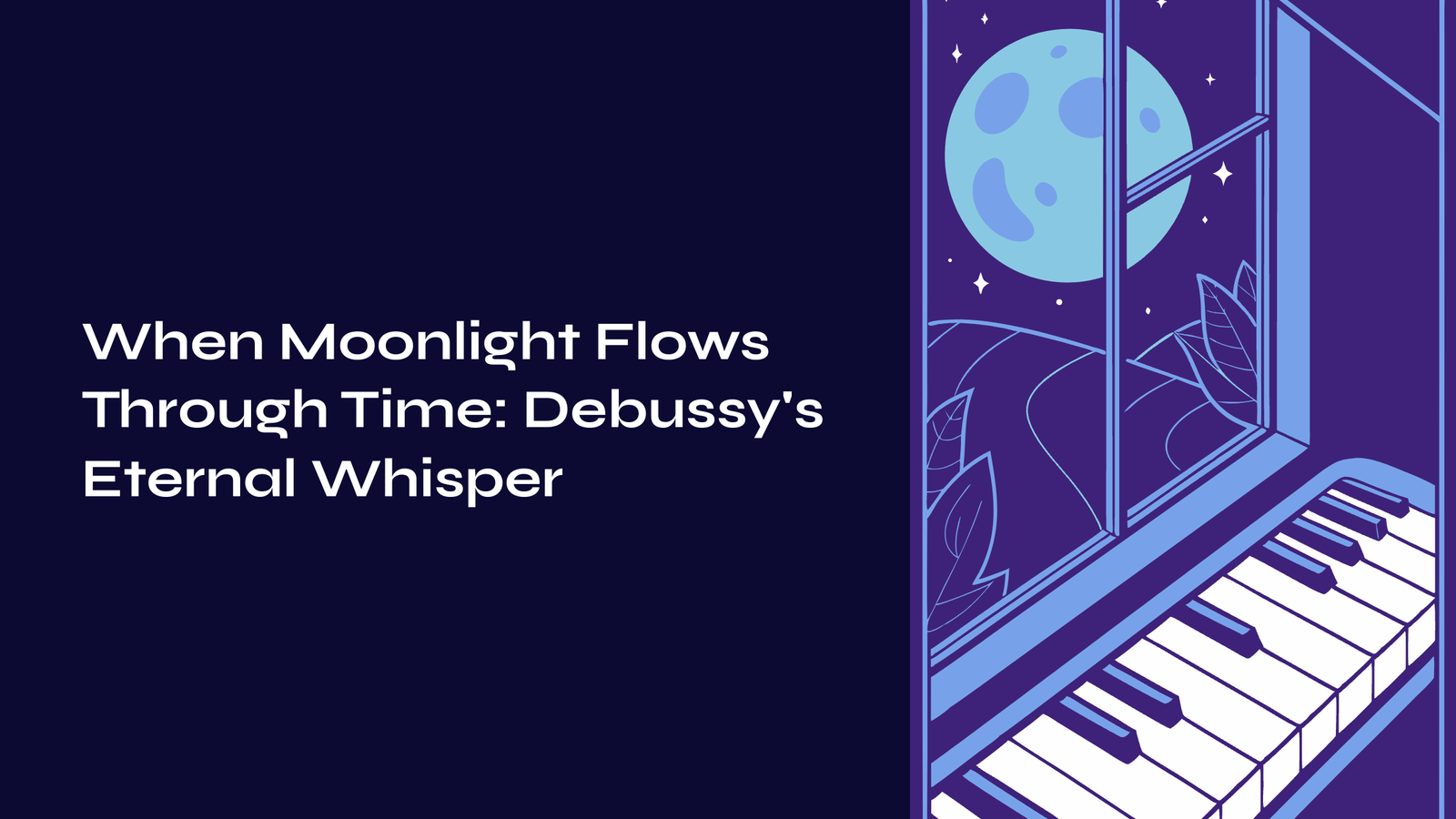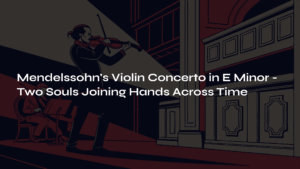Table of Contents
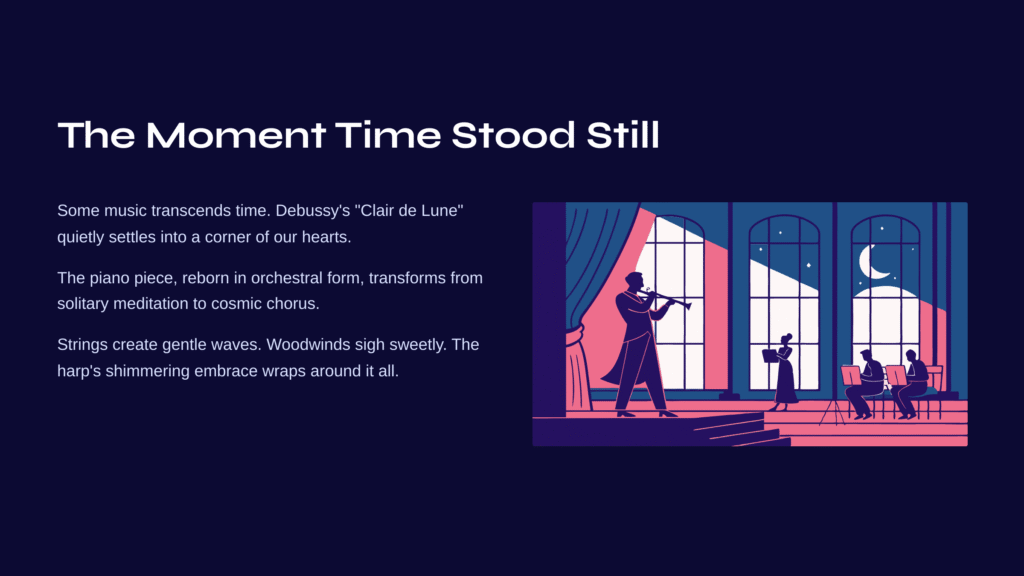
The Moment Time Stood Still
Some music transcends time. Like moonlight gently seeping through a window, there are pieces that quietly settle into a corner of our hearts. Debussy’s “Clair de Lune” is precisely such music.
When this piece, originally written for piano, donned the orchestral garb, I was transported to an entirely different world. What had been a solitary, quiet meditation suddenly became a cosmic chorus. The gentle waves created by strings, the sweet sighs of woodwinds, and the shimmering embrace of the harp wrapping around it all. This wasn’t merely an arrangement—it was a complete rebirth.
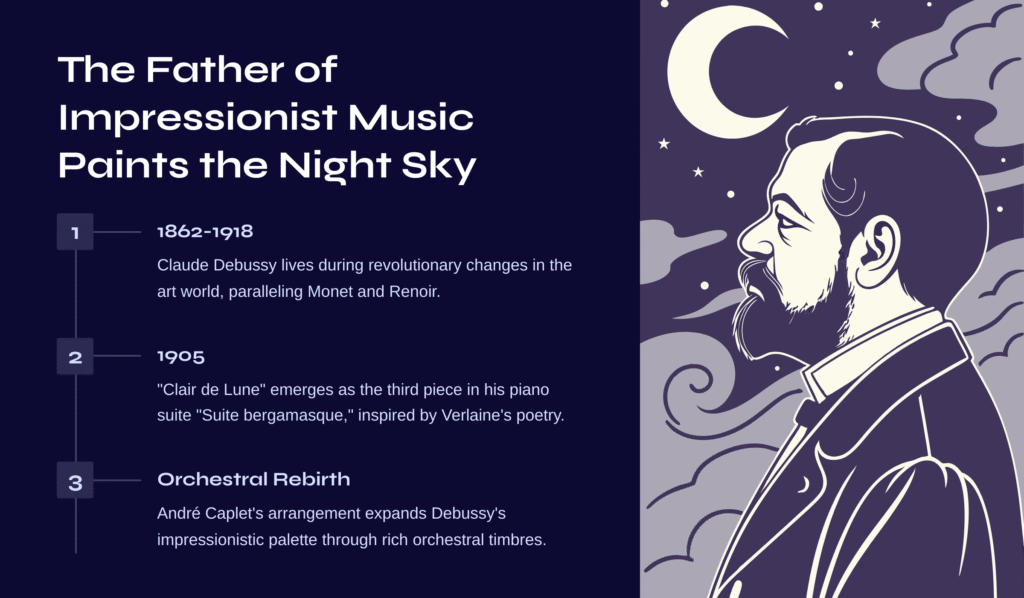
The Father of Impressionist Music Paints the Night Sky
The era in which Claude Debussy (1862-1918) lived was a time when revolutionary winds swept through the entire art world. While Monet and Renoir were writing a new language of light and color on canvas, Debussy was conducting the same experiment with music.
“Clair de Lune” was born in 1905 as the third piece in his piano suite “Suite bergamasque.” Though said to be inspired by Paul Verlaine’s poetry, Debussy focused more on the atmosphere and emotions that the poem evoked rather than a direct musical translation. Much like a painter captures the impression of a subject rather than depicting it exactly as it appears.
The orchestral version wasn’t directly arranged by Debussy himself, but has been reborn in various forms by different arrangers. Among these, the most widely known is André Caplet’s arrangement, which expanded Debussy’s impressionistic color palette through the orchestra’s rich timbres.
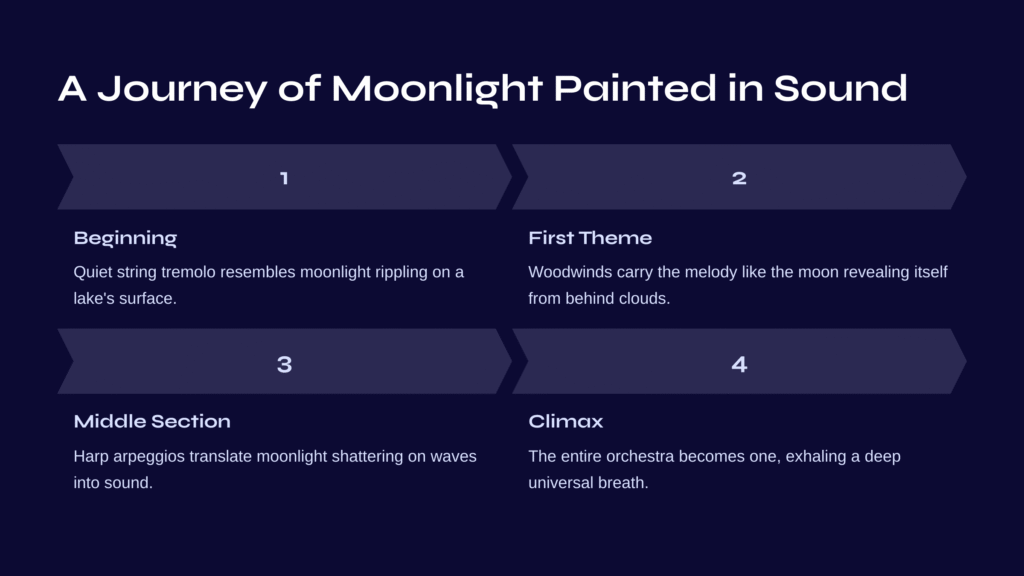
A Journey of Moonlight Painted in Sound
Listening to the orchestral version of “Clair de Lune” feels like becoming moonlight itself, traveling through the night sky.
The piece begins with the quiet tremolo of strings. This resembles moonlight rippling on a lake’s surface. Just as countless tiny tremors gather to create one great wave, the small vibrations produced by each string instrument unite to form a vast ocean of emotion.
Then the first theme emerges. This melody, which the right hand carried in the piano version, is primarily taken up by woodwinds in the orchestral arrangement. When clarinet or flute sings this melody softly, it’s like watching the moon slowly reveal itself from behind clouds.
The middle section features particularly striking harp arpeggios. The resonance and reverberation that piano keys could never express seem to translate the image of moonlight shattering and scattering on waves directly into sound.
When the piece reaches its climax, the entire orchestra participates, yet even that moment never becomes loud. It’s as if all instruments become one gigantic instrument, and the entire universe exhales one deep breath.
And finally, everything fades back into silence. Only the subtle trembling of strings remains to create an afterglow, like moonlight dissolving into dawn mist as the music seeps into silence.
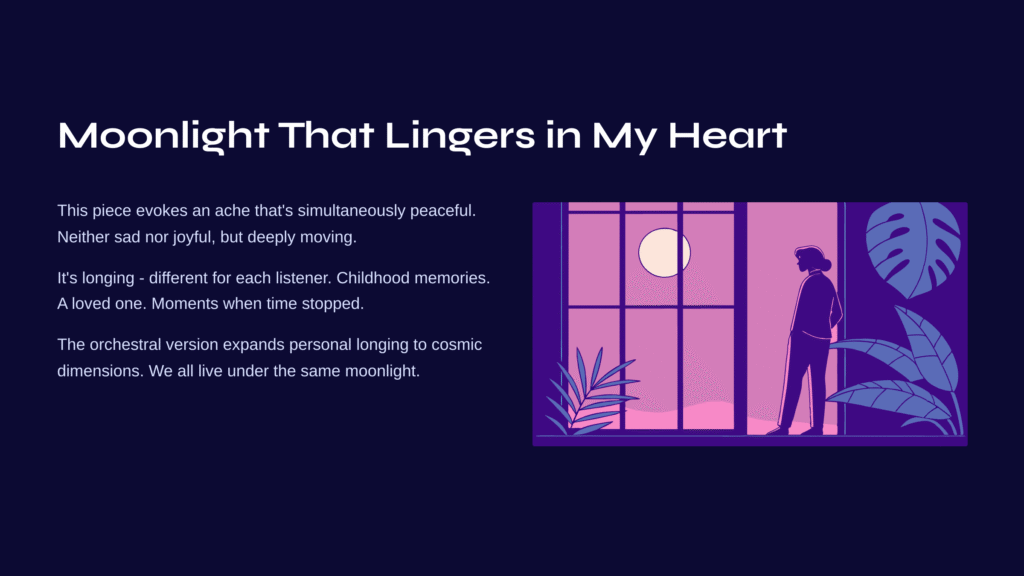
Moonlight That Lingers in My Heart
When I first heard this piece, I couldn’t understand why my heart ached while simultaneously becoming peaceful. Neither sad nor joyful, yet something deeply moving. I realized later—this was longing.
What kind of longing varies from person to person. For some, it might be childhood memories; for others, longing for a loved one. For me, it was longing for those moments when time had stopped—those times when I could gaze at moonlight without a care in the world, lost in reverie.
The orchestral version of “Clair de Lune” expands such personal longing to a cosmic dimension. My small, solitary longing suddenly connects with everyone’s longing. The music makes us realize that we all ultimately live under the same moonlight.

Small Suggestions for Deeper Listening
When appreciating this piece, focusing on a few specific points can create an even richer experience.
First, pay special attention to the harp’s sound. Its unique resonance and reverberation, impossible to feel in the piano version, adds a magical atmosphere to the entire piece. Particularly in the arpeggio sections, listening to how each note of the harp overlaps and fades is like watching moonlight reflected and scattered on waves, transformed into sound.
Second, notice the strings’ tremolo technique. This isn’t simply rapid repetition of the same note, but creates subtle changes as if moonlight itself were alive and moving. Feel how this trembling creates the atmosphere that envelops the entire piece.
Third, comparing different orchestral arrangements can be rewarding. Since each arranger interprets Debussy’s original differently, the same piece can provide completely different emotional experiences. Personally, I recommend listening during quiet dawn hours or deep night. Being with this music in a silent space allows you to experience time flowing differently.
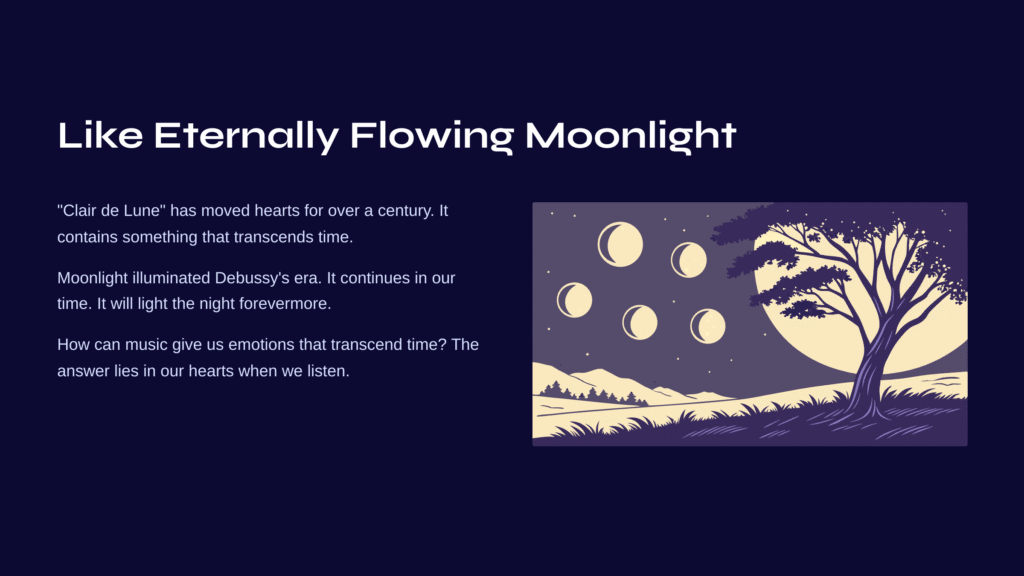
Like Eternally Flowing Moonlight
Why has Debussy’s “Clair de Lune” moved people’s hearts for over a century? Perhaps because this music contains something that transcends time. Moonlight illuminated the night sky in Debussy’s era, continues to do so in our time, and will unchangingly light the night forevermore.
Listening to the orchestral version of “Clair de Lune,” I wonder: How can music, an art form that can only exist within time, give us emotions that transcend time? Perhaps we can find that answer in our own hearts the moment we listen to this piece.
On nights when moonlight seeps through windows, let’s play this music and pause time for a moment. The beauty of that instant Debussy captured a hundred years ago will come alive once more in our hearts at this very moment.
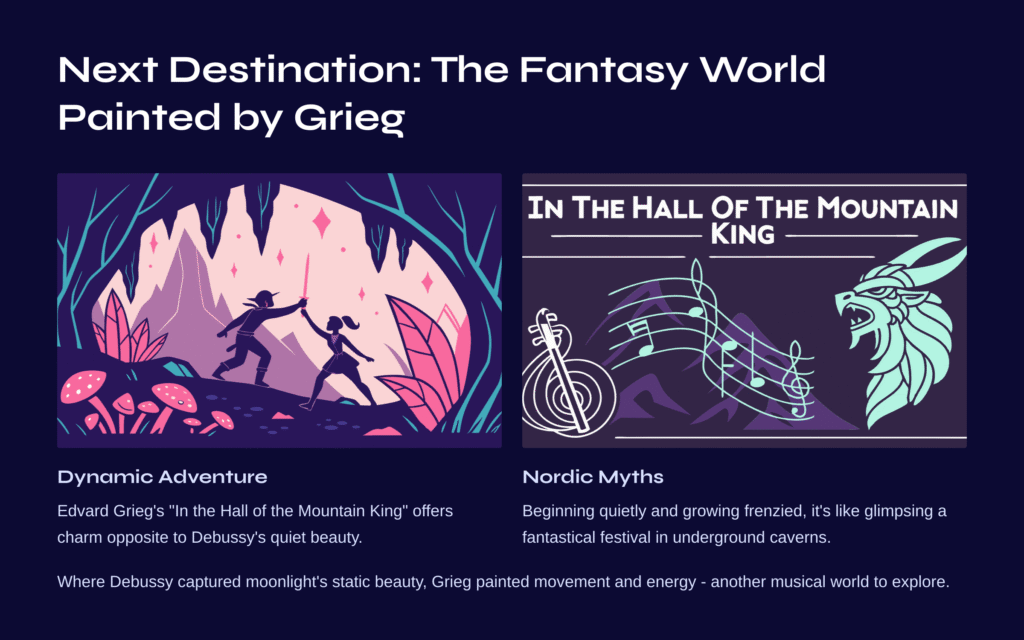
Next Destination: The Fantasy World Painted by Grieg
If your heart, having been immersed in the quiet beauty of moonlight, yearns for a more dynamic adventure, I recommend Edvard Grieg’s “In the Hall of the Mountain King.” This most famous piece from the Peer Gynt Suite possesses a charm completely opposite to Debussy’s “Clair de Lune.”
This music, beginning quietly and gradually transforming into frenzied dance, feels like glimpsing a fantastical festival deep within underground caverns. Where Debussy captured the static beauty of moonlight, Grieg painted the dynamism of movement and energy in music. Listening to this piece, where Nordic myths and legends breathe with life, we’ll experience another kind of time travel.
The moment when introspective contemplation felt through “Clair de Lune” transforms into extroverted adventure—a work that reminds us once again of the infinite worlds music can transport us to.
